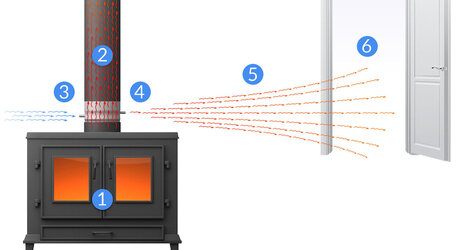Hi everyone,
I just saw a YouTube video on something called “recoheat” and found it interesting enough to look it up on their website: https://www.recoheat.co.uk/flue-pipes-how-it-works
It’s a heat recovery unit, which looks like a coiled tube which is sits inside of the flue. ambient air from the room enters through one end of the tube to circulate through the coiled tube inside the flue and returns back to the room after capturing heat from inside the flue.
The idea behind this tool is to reclaim some of the heat that’s lost up through the flue. Anyone in the US have any experience with something like this?

I just saw a YouTube video on something called “recoheat” and found it interesting enough to look it up on their website: https://www.recoheat.co.uk/flue-pipes-how-it-works
It’s a heat recovery unit, which looks like a coiled tube which is sits inside of the flue. ambient air from the room enters through one end of the tube to circulate through the coiled tube inside the flue and returns back to the room after capturing heat from inside the flue.
The idea behind this tool is to reclaim some of the heat that’s lost up through the flue. Anyone in the US have any experience with something like this?

Last edited:


